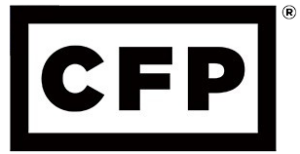Why Solar Energy
With the cost of gas and electricity skyrocketing in the past year, many households are looking to clean energy alternatives.
Of all the clean energy alternatives, I’m most often asked about solar panels and electric vehicles. Today I’m focusing on the panels. After all, it is home-buying season.
The pros of solar energy are numerous. The sun is not dependent on another country, you’re able to remain totally or partially “off-grid”, it has a low impact on the environment, and currently, our government is offering various subsidies/credits to make installation more affordable. Read about the latest offerings via the Inflation Reduction Act of 2022 here.
The cons are that this option obviously works best in sunny climates, solar tech requires rare materials, the panels themselves are largely imported from other countries, and the tech (in my opinion) hasn’t seemed to make much headway in the last decade. The panels still require significant surface area to generate a worthwhile amount of power and are arguably not aesthetically pleasing which can make mounting them on your home a tough pill to swallow.
The Advantages of Solar Energy
We’re dreading our gas and electricity bills each month, while simultaneously watching a war happen in Ukraine. Having the ability to generate our own power by using solar can certainly feel like a way to take some control back. And in addition, many want to play a role in reversing climate change and help create some new norms for energy consumption. So while it’s easy to name off the positives, let’s ensure that the negatives are understood before any dotted lines are signed.
The Disadvantages of Solar Energy
Square Footage
Some may ask why we’re not powering whole cities on solar, and it comes down to the significant amount of land use that’s required to hold panels. If you’ve ever gotten a quote for solar on your home, you’ll notice the value of them is directly related to how many your roof can hold. If you have a small footprint but multiple levels – the numbers probably aren’t going to make sense. Or if you’re like me and only willing to put panels on parts of the roof that aren’t visible to the road to keep the aesthetic of the house, you may find that the amount of power produced is somewhat immaterial given the overall cost to install them.
Intermittency
For areas like California and Arizona where the sun is always shining and roof styles are more often flat than steep (so the panels aren’t so obvious), the decision to go solar may feel like a no-brainer. Especially with California enforcing rolling blackouts. The question becomes related to selling surplus back to the grid or purchasing storage cells that can be drawn on during inclement weather. But in New England where we have harsh winters and steep roofs to help with snow, you really need to work with a trusted solar expert to give an opinion on how much the panels will really be able to capture in winter months.
An Environmental Downside
I find that whenever we try to do good one way, it’s at the expense of another resource. Paper vs plastic. Water conservation vs recycling. And now the fact that solar technology contains many of the same hazardous materials as electronics, particularly lithium. The problem of disposing this hazardous waste becomes a new concern for the environment. Assuming this can be addressed adequately in the future, it keeps solar pretty attractive. In addition, many of the rare materials needed to create the panels are in other countries, which means creating or repairing panels in the future could be expensive if not impossible.
Figuring out if Solar is Affordable
Adding solar to your home has a few layers of financial consideration, here are some to evaluate:
Cost to Install
I’ve seen anything from $4,000 to $90,000 to buy panels. Much of the cost is variable given your roof size, so getting a quote is imperative to determine your cost. And when comparing various quotes, it’s important to really understand the amount of energy the panels are predicted to produce to help determine the time it will take you to break even on the investment. I’ve looked at this for clients and found that the lowest quote also produced the least amount of energy and took the longest to break even. You’re looking for value, not necessarily just the cheapest route. But in general, expect a breakeven to be between 5-10 years.
Another part of the cost could be related to style. For instance,
Tesla has released a solar roof shingle in a variety of styles (now this is something I could agree to aesthetically). But the price tag is easily $10s of thousands of dollars. And while the cost of solar technology has come down over the years, the cost of installation and the reduction of subsidies has actually made the project more expensive than in years past. So start reaching out to reputable providers to get custom quotes and pay very close attention to their assumptions while comparing.
Remember that there is also the option to lease panels. In general, it’s savvier to purchase the panels, but potentially it’s friendly from a cash-flow perspective to lease them.
Forbes compares the two options here.
Cost at Sale
I’ve read that panels increase your home value (more on that in a minute). Potentially that’s true. But I’d warn that you’re alienating potential buyers who may not be as keen on the idea. Especially if the panels are older or you’re still paying off the panels. If still paying on the panels, you’d have to get the buyer to agree to take over the liability. Now given today’s competitive real estate market – buyers aren’t in a position to be choosey. But outside of this market, I feel that it could easily be used as a negative negotiating point on the price. So if you’re thinking of selling your home prior to breaking even on the panels or when the panels will potentially need replacing, think hard about whether they are actually an asset or liability.
Property Taxes
Solar panels are considered a capital improvement and therefore can increase your home value. An increase in home value can mean a bump in property taxes. How they are considered can be confirmed at your local town hall.
Tax Savings and Subsidy
Yes. The federal solar investment tax credit, enacted in 2006, provides a 26% tax credit for solar panels installed on residential and commercial properties ending 12/31/2023. Each state also runs its own programs,
here is a link for Massachusetts.
Electric Savings
Yes, you’ll surely have a lower electric bill. But as mentioned, pay close attention to the quotes. It’s common for the panels to lower your bill, but not eliminate them (especially for a larger home). So you’ll continue to have some level of electric bill + you have a new bill for the panel themselves. For a while you may actually be paying more before you pay less, so make sure you can absorb this reality within cash flow.




